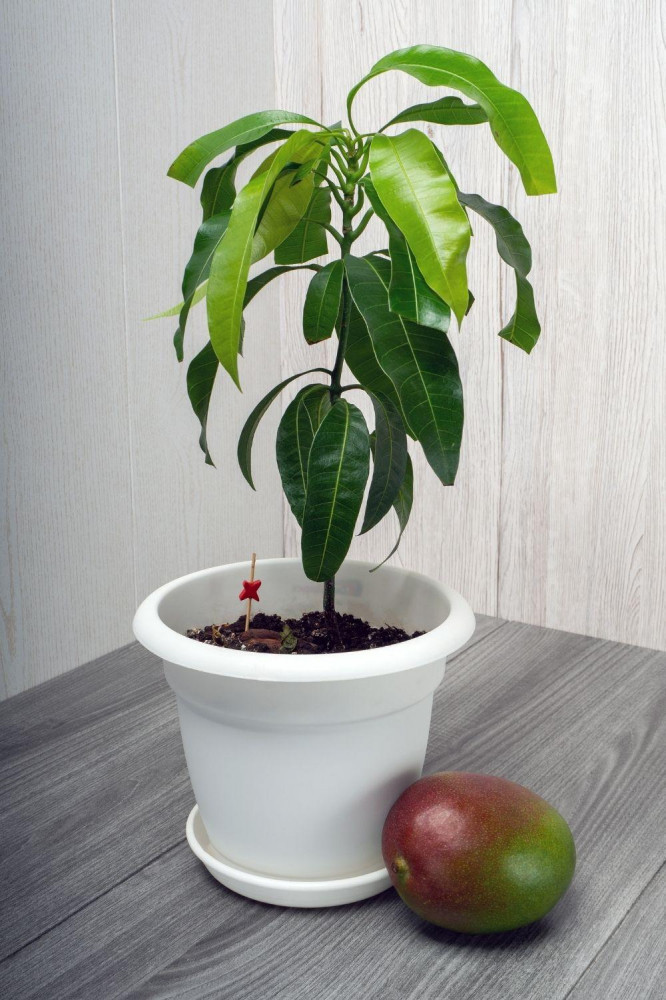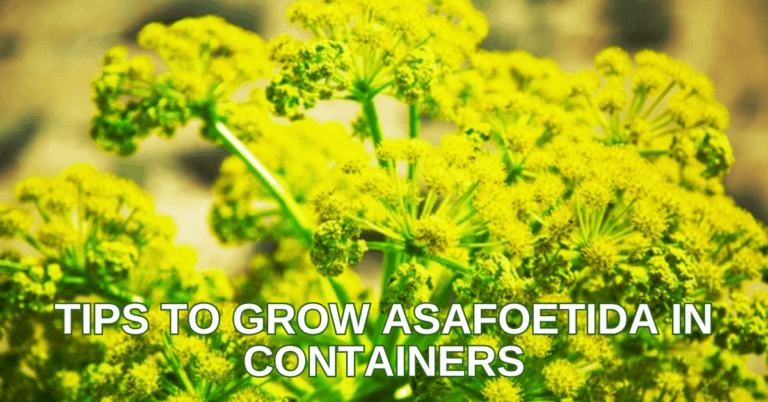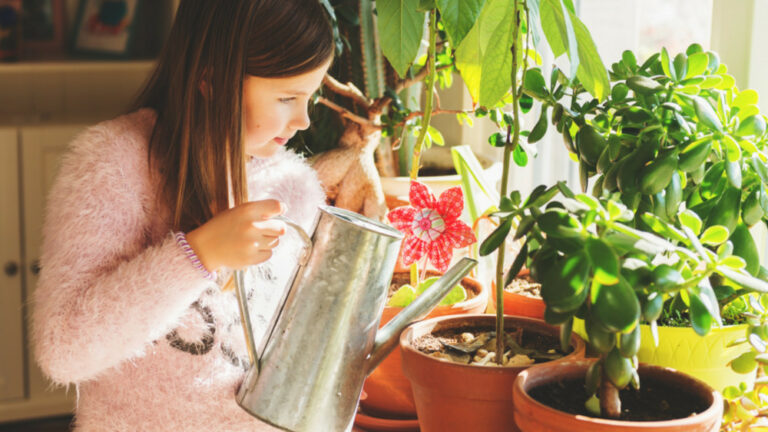Easy Ways To Grow Mango Trees In Containers
Easy Ways To Grow Mango Trees In Containers
Mango trees have been cultivated in the Indian subcontinent for thousands of years. Because you're short on space, don't skip out on this tropical delicacy's sweet and spicy flavour.
Container gardening has several benefits, and a dwarf mango will produce as much delectable fruit as its full-size cousin, so don't be fooled by its diminutive stature.
Depending on the cultivar, a mature dwarf mango can reach 4 to 8 feet. Plant hardiness zones 9 and 10 of the United States Department of Agriculture are ideal for dwarf mango trees.
Spring is the most fantastic time to plant a potted mango. In this article, I’ll show you how to grow mango trees in containers ideally.
Is It Possible To Grow Mango In A Pot?
Yes, mango trees can be grown in containers. Especially the dwarf kinds, which typically do well in containers.
Mangos are native to India, which explains their preference for hot weather. The large varieties make great shade trees, growing up to 65 feet (20 meters) in height and producing fruit for up to 300 years!
There are various dwarf kinds suited for a container-grown mango tree, whether you live in a cool region or don't have the space for a 65-foot (20 m) tree.

Nutrition Facts Of Mango
One cup (165 grams) of fresh mango provides:
- Calories: 99
- Protein: 1.4 grams
- Carbs: 24.7 grams
- Fat: 0.6 grams
- Fibre: 2.6 grams
- Sugar: 22.5 grams
- Vitamin C: 67% of the Daily Value (DV)
- Copper: 20% of the DV
- Folate: 18% of the DV
- Vitamin B6: 12% of the DV
- Vitamin A: 10% of the DV
- Vitamin E: 10% of the DV
- Vitamin K: 6% of the DV
- Niacin: 7% of the DV
- Potassium: 6% of the DV
- Riboflavin: 5% of the DV
- Magnesium: 4% of the DV
- Thiamine: 4% of the DV
Note: The Source From FoodData Central
15 Best Mango Varieties For Containers
You should find the best varieties to grow mango trees in containers for your zones. I’m sharing some popular and small-size mango varieties.

1. Julie Mango
This mango is most typically found in the Caribbean, where it first gained popularity. Julie is classified as a little tree.
This mango is tiny, weighing around 6-10 oz on average. It develops a subtle orange hue over time.
The fruit usually ripens between June and August. Julie has a lot of taste but is also high in fiber.
2. Hawaiian Dwarf Mango
This mango is said to be Julie and Kent's offspring. It is one of the first types to bear fruit and produces mangoes early in the season. Throughout the year, Dwarf Hawaiian can have a variety of crops.
It has a creamy flavour similar to Julie's, with a tinge of coconut. It has a more spherical shape with creamy flesh and weighs roughly 10 oz.
3. Irwin Mango
This mango is a Haden lineage mango that originated in South Florida. It's a container-compatible dwarf tree. Irwin has the potential to be a powerful producer.
The fruit has a lovely, rich crimson blush to it. The fruit has no fiber and ripens between June and July.
4. Fairchild Mango
Panama is the origin of this mango. It's a condo mango but is well-versed in container culture. It ripens in June-July and has yellowish-green skin. It's a fibreless mango with a pleasant scent.

5. Carrie Mango
Carrie's skin tends to stay primarily green; it's tough to tell when to harvest it. The meat is tender and flavourful, melting in your mouth. It is devoid of fiber and is easily bruised if handled incorrectly.
Another condo mango, but this one can be grown in a container. Its growth pattern is compact. In June-July, the fruit ripens to about 12 ounces.
6. Alampur Baneshan Mango
This mango variety hails from India and is another outstanding Indian dessert mango. It's best if you pick it up when it's still green and leave it on the counter to ripen fully. The fruit is too intense for some, and this mango isn't widely available outside India.
The tree is another condo mango that can be grown in a container. Fruits can weigh up to 16 ounces and are oval. They usually ripen in June and July.
7. Nam Doc Mai Mango
This is a traditional Asian dessert mango variety. This cultivar comes in a few different forms. Some kinds are dwarfer than the typical Na, Doc Mai, but even that is a naturally smaller tree suitable for a container. The elongated shape of this tasty, juicy mango tends to develop a yellowish skin hue.

8. Rosigold Mango
The Ono variety of mango may have originated in Southeast Asia. It's a condo mango with a low-growth habit, ideal for containers. The fruit ripens early, as early as March in certain cases. It's a sweet, fragrant, fiberless mango.
Its skin is normally yellow with an orange-red flush. It's also becoming more popular as a rootstock due to its propensity to thrive in containers naturally.
9. Mallika Mango
This is an Indian type with Neelum and Dasheri as parents. Condo mangoes are one of the most popular Indian dessert mangoes and are well-suited to containers.
It features citrus undertones and melon notes, with a sweet, rich flavour many appreciate. The mango weighs between 10 and 16 ounces and ripens between June and July.
10. Pickering Mango
This type is most known for being built for a container. Pickering is a tiny, productive plant that produces much fruit at a young age.
It might have a bit of coconut flavour to it. The flesh is firm and fibreless, with a 12-32 oz size range. It has a yellowish skin tone with burgundy blush and brown streaks.
11. Ice Cream Mango
Trinidad and Tobago are the origins of this mango. At roughly 6 feet, it's considered semi-dwarf and easy to care for.
The fruit is tiny, weighing between 5 and 12 ounces. The meat has a sweet and spicy flavour and is fiberless. It has greenish-yellow skin that ripens in June-July.

12. Cogshall Mango
Another semi-dwarf, compact type that's ideal for container growers. This is a Haden offshoot that developed in Florida.
It's a fiberless mango with a delicious, typical mango flavour. It's a vibrant mango with a variety of pink tones. It ripens in June-July and weighs between 10 and 16 ounces.
13. Lancetilla Mango
This mango is said to be a hybrid between Saigon and Mulgoba from Honduras. These mangoes can grow to be quite large, weighing up to 5 pounds.
The tree is semi-dwarf and can easily be kept to a height of 10 feet or less. It's a late-ripening variety that ripens between August and October. It's a reddish mango that's delicious and fiberless.
14. Graham Mango
Julie has produced another offspring, this time from Trinidad. The flavour is deep, sweet, complex, and pung punch.
Fruits that weigh 20-26 oz. are a bit larger. Occasionally, they ripen from June to August and have yellow skin with a faint pink blush.
This type is slightly more aggressive than Julie, growing significantly larger but still manageable at 10 feet.

15. Honey Kiss Mango
This variety is thought to have descended from the Gary and Keitt types. It's a small miniature mango tree that produces a large yield, generally in clusters. This type has a slower growth rate, which makes it easier to handle in containers.
Honey Kiss has a strong honey taste. It has a red flush and yellowish-green skin and is primarily fiberless. It ripens from July through August; the fruits weigh between 8 and 16 ounces.
Grow Mango Trees In Containers
Now, I’ll share all the steps that will help you grow mango trees in containers perfectly.
1. Time To Plant
Fall and spring are the optimum times to put a mango tree in a container. Because mango trees despise cold weather and frosts, it's better to plant them in the spring or summer when the temperature is pleasant. This will give them time to establish their root system.
When planting a new mango tree in a container in the fall, keep it in a bright, sunny location until the cold winter weather hits.
After that, it can be transferred to a protected location to avoid frost damage and exposure to the cold winter winds.

2. Container Requirements
Choose a container one size larger than the current root ball for planting a new mango tree. This entails selecting a pot or container 3-4 inches bigger and deeper than it arrived in.
Choosing a one-size-larger container will allow the plant to be progressively transplanted to a larger container as it grows.
The soil will not become too cold or damp on the outside of the roots, preventing root rot or disease.
3. Mango Trees Grown From Seed
Mango trees can quickly grow from seed. Slit the hard husk of a fresh mango pit. Remove the seed from the inside and place it in a large pot with a seed starter mix.
The ideal way to cultivate mango trees is to plant the seed with a 14-inch (.6 cm) protrusion above the soil level.
Keep the soil equally moist and the pot at a temperature of at least 70 degrees Fahrenheit (21 C.). Sprouting can happen in as little as eight to fourteen days, but it can take up to three weeks.
Remember that your new mango tree seedling will take at least six years to bear fruit.
4. Location Requirements
Mango trees can be cultivated in pots or large outdoor spaces. Mango trees vary in size depending on the species, although they can grow enormously, reaching heights of 10–15 feet (3.0–4.6 m).
As a result, find a spot where your tree will have lots of room to grow without being shaded by more giant trees.

5. Soil Requirements
- It requires light, well-drained soil with plenty of organic matter.
- The pH level should be 5.5 and 7.5 (slightly acidic to neutral).
- Instead of utilizing garden soil, invest in a high-quality potting mix.
- Also, add ⅓ part compost or aged manure to the soil mix while planting.

6. Fertilizer
Mangoes grown in containers require fertilizer because they depend on you for their nutrients.
Starting with good quality potting soil containing up to three months of fertilizer will aid the establishment of the mango tree.
After that, give the tree a nutrient boost in the spring by fertilizing it with pelleted chicken dung before it bears fruit.
If the plant has been given a good nutrient feed, it will flower and set fruit in the spring and summer.
Organic fertilizers are my preferred choice because they are a natural approach to nourishing plant and soil microbes.

7. Watering
Giving mango trees enough water is critical when growing them in containers.
Those growing in dark-coloured pots should be checked frequently, as the pot can quickly heat up and dry out if left in the sun.
The soil will stay moist for longer in raised garden beds or larger containers. If there isn't enough rain in the summer, mango trees in pots may need to be watered up to 2-3 times per week.
Watering them once a week in the spring and fall while they're established is critical to keep the roots from drying out. Mulch can be placed on top of the pot to reduce water evaporation.
Bark mulch looks fantastic and moistens the soil, so I like to use it on the tops of large potted plants. On top of the container, you can put sugar cane mulch, straw, or pea straw mulch.
8. Winter Care
Use a dark-coloured container in a cooler climate because the mango tree prefers warmth, and the black hue absorbs heat.
Because a mango tree doesn't like a wet, waterlogged growing medium, make sure your container has plenty of drainage holes.
When the temperature drops, you must cover the pot with bubble wrap. If you're not planting your mango tree in a frost-free area, transferring its pot into a greenhouse or indoors during the winter is also an excellent option.
It should be placed in a room with a south-facing window that gets at least some direct sunshine during the day.
Use grow lights and special temperature-raising halogen lights to try to warm up the room. You can also use a cover to protect your plant from the cold.

9. Pruning And Pinching
When your plant is young, pinching it frequently fosters bushier growth. Every year, the mango tree does not require much pruning.
To control its shape and health, however, it is required to remove dead, diseased, and entangled branches that create a lack of air circulation, and sunshine penetration after the harvest is the finest time to prune!
10. Humidity & Temperature
If the weather is dry, spritz a mango tree daily if the humidity level is above 50%. Also, keep the temperature of your tree as high as possible, ideally over 70 degrees.
Mango trees cannot withstand freezing conditions, and even temperatures in the 40s can result in the loss of blooms and fruit.
Pests & Diseases Of Mango Trees
Hoppers, fruit-fly, Mealybugs, Scales, and Spider Mites are common pests that affect mango trees.
They lower the mango tree's vigour, resulting in fewer fruits. Organic insecticides should be used to control them as soon as possible.
Mangoes are harmed by pests and diseases, the most common causes of death. The smell of its blossoms is primarily used to attract pollinating insects.
A few pests wreak havoc on mango trees by spoiling their leaves. Powdery mildew, anthracnose, scab, mango deformity, and black rot all affect mango trees.
Changes in temperature, soil, sunlight, and watering are the main causes of plant diseases. It could be due to a nutrient shortage.
We usually use organic methods (fertilizing by delivering sufficient nutrients) and Neem oil or organic sprays to dissuade pests and avoid diseases.

Harvesting
After flowering, it takes 3 to 4 months to harvest. Because the fruit comes in various sizes, shapes, and colours, you can't tell if it's ripe.
Wait two weeks after it turns green and hard. If the mango fruit's core is yellow, the fruit is ready to eat.
Even if the mango fruit is picked early, it can be ripened at room temperature by putting it on a paper roll.
Mango Recipe Ideas

Mango Smoothie
Ingredients
- Mango: 3 cups
- Banana: ½
- Water: ½ cup
- Non-dairy milk: ½ cup
- Ice cubes: 5
- Freshly squeezed lemon juice: 1 tablespoon
Instructions
- In a blender, combine all ingredients except 1 cup of frozen mango. Blend until completely smooth.
- Blend in the remaining 1 cup frozen mango until smooth. Let’s Enjoy it!
Delicious Vegan Mango Dessert Recipes For Your Kids
7 Delicious Vegan Mango Recipes For Your Kids
Conclusion
Growing one in a container is ideal if you're renting and want to take your mango tree with you when you move.
Mango trees grown in containers can be just as prolific as those grown in the ground since they can be kept small and focused on producing fruit rather than big branches.
Don’t miss trying the smoothie; you may visit here if you would love to try more mango items.
I trust you enjoyed this article on the Easy Ways To Grow Mango Trees In Containers. Please stay tuned for more blog posts to come shortly. Take care!
JeannetteZ
>>>Please click here to read my all-inclusive article about Container Gardening<<<
>>>Are you interested in homegrown herbs and medicine? Please click here to find out more about it!<<<
Your Opinion Is Important To Me
Thoughts? Ideas? Questions? I would love to hear from you. Please leave me your questions, experience, and remarks about this article on the Easy Ways To Grow Mango Trees In Containers in the comments section below. You can also reach me by email at Jeannette@Close-To-Nature.org.
Disclosure
This post may contain affiliate links. I earn from qualifying purchases as an Amazon Associate and other affiliate programs. Please read my full affiliate disclosure.
You might also enjoy these blog posts:
11 Simple Ways To Use Avocado In Your Daily Meal
12 Easy Steps Of Growing Avocado Trees In Containers
Easy 10 Steps Of Growing Dragon Fruit In Pots
Top Tips To Relax In Life In 2022








